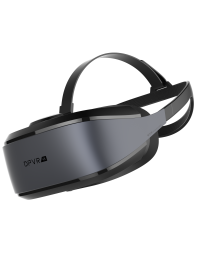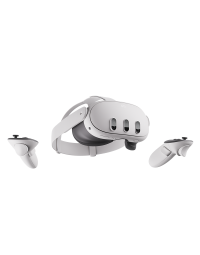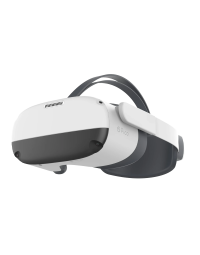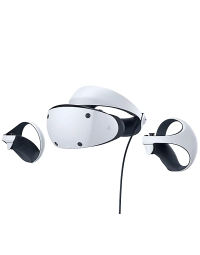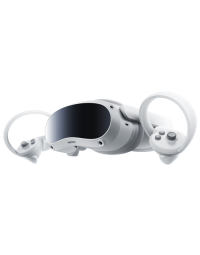Even better than its predecessor
With the launch of the HP Reverb, HP aims to compete directly with other high-end VR headsets, such as the HTC Vive Pro. While the HP Reverb has made some significant improvements over its predecessors - the Samsung Odyssey and Acer AH101 - there are still areas where the Reverb falls short. In this review, you can read all the pros and cons of the HP Reverb. Want to order the HP Reverb? You can check it out here
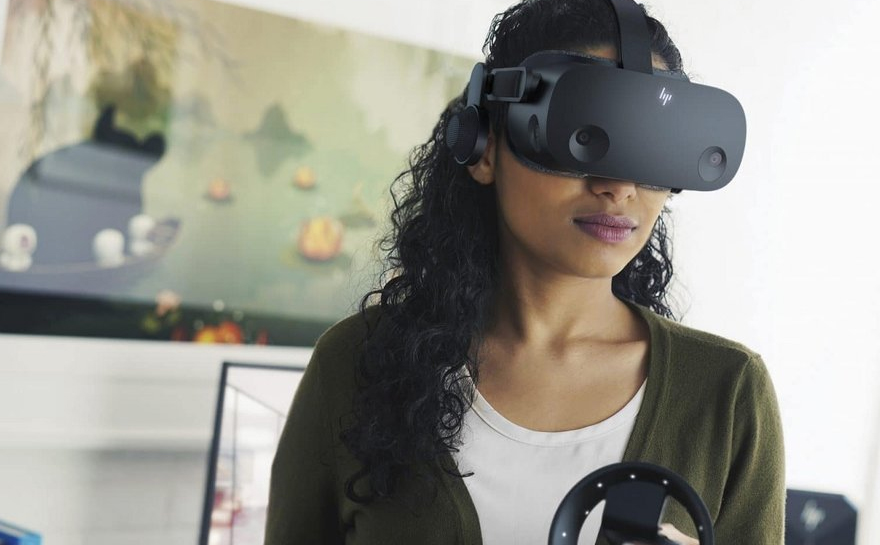

New design
The HP Reverb looks like a cross between the Google Daydream and the Oculus Rift S. The matte black design with a fabric texture on the front gives the headset a cool appearance. But because the headset doesn't look big, it doesn't look as intimidating as other headsets in the same price range. The HP Reverb looks like you can just put it on. This is partly due to the inside-out tracking; the headset only has a single cable running to the computer. You put the headset on, perform a small room-scale procedure, and can immediately get started with free-roam VR fun
Lightweight
But what really sets the HP Reverb apart from its competition is the high degree of comfort. Weighing just half a kg, the HP Reverb is comparable to the Oculus Go. For a headset that needs to be tethered to a computer, this is incredibly light. This allows you to play with the HP Reverb for longer periods without feeling like you have an annoying headset on your head. In addition, the Reverb has a large circular ring on the back of the headset. This ring ensures that the (light) weight of the headset is distributed even better over your head
The built-in headphones can be placed on your ears with pads for a good sound experience. And an extra convenience is the flip-up screen of the HP Reverb. If you don't want to play for a while - or want to look in the room - you can tilt the screen up a bit. This way, you don't have to take off the headset if you want to have a drink or talk to someone, you can simply click the screen up and go about your business. It is also possible to look through the front-facing camera with Microsoft's "Flashlight", allowing you to see the real environment while you have the headset on
Image and resolution
The image of the HP Reverb is what makes the headset so impressive. With two LCD screens, the Reverb offers a whopping 2160 x 2160 pixels per eye (for comparison: the HTC Vive Pro has a resolution of 1600 x 1400 per eye). This makes the HP Reverb one of the highest image resolutions on the commercial VR market. Every detail is displayed down to the smallest points, which - with the right VR game or app - ensures that hyper-realistic images can be shown
Sub-pixels and a refresh rate of 90 Hz ensure that there is almost no screen-door-effect (see the image below for a comparison). However, there is the less known "Mura" effect. Here, colors and brightness are not always displayed consistently. But according to other users, this effect is minimal and rarely occurs


WMR controllers
Unfortunately, the controllers of the HP Reverb are somewhat disappointing. With the advent of the new Oculus touch controllers and the soon-to-be-released Valve Knuckles, the Mixed Reality controllers seem a bit outdated. The way you hold the controller in combination with the layout of the buttons makes the controller feel a bit uncomfortable. Does the controller do what it needs to do? Absolutely, but once you're used to the Oculus Touch or Valve Knuckles, you don't want to go back to the mixed reality controller
As mentioned earlier, the HP Reverb works with inside-out tracking. This eliminates the need to place external sensors in the room, but you can simply put on the headset and the tracking follows automatically. The disadvantage of this method of tracking is that when the controllers are out of the headset's field of view, you can lose tracking. For many games, this is not a problem in practice - you can play Beat Saber just fine without losing tracking -, but sometimes you can notice this if you hold your controller behind your head or next to your side
Conclusion
Despite the controllers, the HP Reverb is still the most impressive WMR headset on the market. The high resolution is breathtaking, and in combination with the high comfort level, the HP Reverb is ideally suited for longer play sessions. Companies and other commercial establishments can also score well with the new HP Reverb. The simple setup and tracking method, together with the extremely high quality, make the Reverb ideally suited for simulations and demonstrations
So, are you looking for a VR headset with high user convenience, high resolution, and a relatively low entry price? Then the HP Reverb is an excellent choice! Click here to order the HP Reverb




